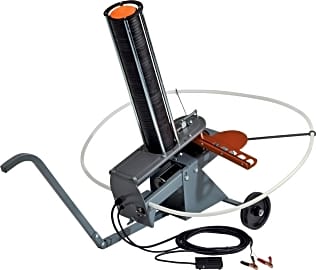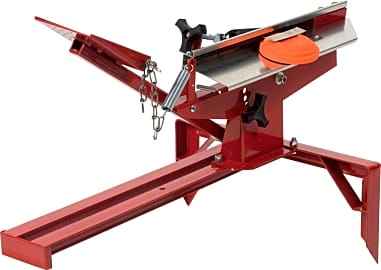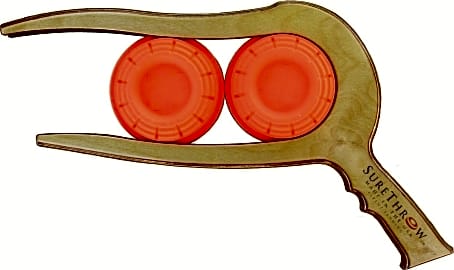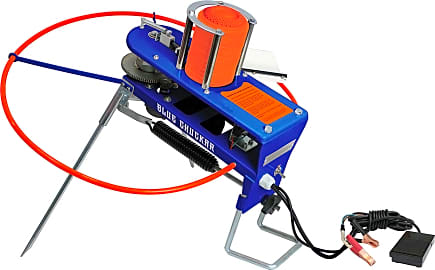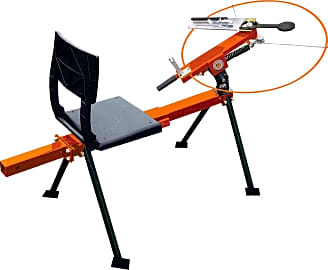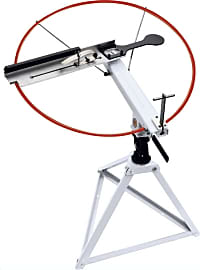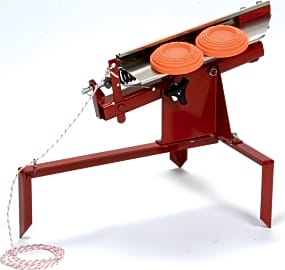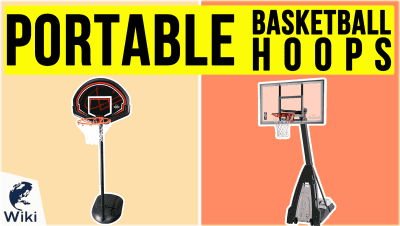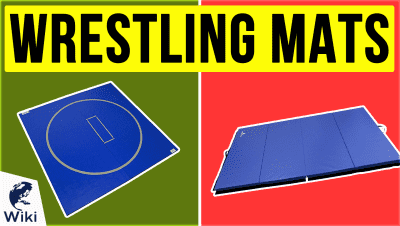The 10 Best Target Throwers

This wiki has been updated 39 times since it was first published in September of 2015. If you know that clay pigeons are not lawn ornaments, then maybe you'll want to check out one of these target throwers, which can help you improve your shooting accuracy anytime you feel like practicing. We've found the best manual and automatic models for you to choose from. For safety reasons, always make sure to stay clear of the throwing mechanisms during operation. When users buy our independently chosen editorial choices, we may earn commissions to help fund the Wiki.
Editor's Notes
April 23, 2019:
When selecting a target thrower, your first choice will be whether to purchase a manual or automatic model. Manual models, like the Birchwood Casey WingOne, SureThrow Handheld, MTM EZ-3 are significantly more affordable than automatic models, but they require a lot of physical effort on the part of the thrower. It is also impossible to throw and shoot at the same time with a manual model, so if you generally like to shoot alone, these are not a feasible choice. The Champion EasyBird and Champion WheelyBird Auto-Feed are great options for a lone shooter who doesn't want to spend a bunch of time reloading clays between shots, since they both have a large-capacity magazine and convenient foot pedal operation. Those who want to kickback and take it easy when it is their time to launch the clays should look at the Do-All Outdoors ST234, which has a seat built right into it. If you are on a tight budget, but don't want to deal with the hassle of manually throwing clays, the Trius 2 Birdshooter can be a smart choice.
A Brief History Of Shotgun Target Shooting
Their use as weapons of defense atop stagecoaches gave rise to the now common word for a vehicle's passenger seat, the shotgun seat.
In the 21st century, the shotgun is a nearly ubiquitous firearm that sees use for everything from sport shooting to law enforcement. There are few sounds more evocative and, given the context, more chilling than the distinctive noise a pump-action shotgun makes as shell is ratcheted into the barrel.
The forerunners to modern shotguns were first developed and used in Europe in the 16th century, with England's King Henry VIII noted for having been particularly fond of the firearms then known as arquebuses and often referred to as haile shotte pieces[sic] -- or "hail shot pieces", as the clusters of small shot they fired resembled hailstones.
Shotguns came into their own during the 19th century for sport, hunting, and martial purposes. Their use as weapons of defense atop stagecoaches gave rise to the now common word for a vehicle's passenger seat, the shotgun seat. And the effectiveness of a shot-based weapon for use by mounted troops was displayed again and again during the American Civil War as well as the many conflicts between American and native peoples that took place during the 1800s.
In the 20th century, shotguns were a regular feature in the horrific warfare of World War I, their fire pattern proving grimly effective in the trenches of that catastrophic conflict. Shotguns were also used by every major army of World War II, by Americans fighting in Vietnam, in the Persian Gulf War of the 1990s, and in most every conflict of that century.
As a hunting and sporting tool, shotguns have played an equally large yet less grisly role in the modern era. Hunters and sport shooters today have at their disposal not only fine arms and ammunition, but also great training aids in the many target throwers currently available. A good target thrower can help the modern fowler perfect his or her aim before the next hunt, or it can provide hours of entertainment among friends or a fine competitive session among serious shooters.
Trapshooting has been popular for well over 200 years, but it was only in the later 1800s that clay "pigeons" replaced actual live birds for the purpose of practice and competitive shooting. Initially, these clays were launched by hand or by a handheld thrower; the first automatic target launcher was developed in the first decade of the 20th century.
Trap shooting has never wained in popularity; it has been an Olympic sport since the games of 1900, and there are many national and international competitions held every year. Many teams train all year round, and their members are considered professional athletes. Of course, target shooting is also wildly popular as a recreational activity for amateur enthusiasts.
Choosing A Handheld Target Thrower
There are many good reasons to consider a handheld clay thrower. First and foremost, these target throwers are very affordable, with some units costing around $10.
Most such units can easily be tucked into a suitcase or hiking pack, and can be carried over long distances thanks to their low weight.
Handheld target throwers are also very compact and lightweight. Most such units can easily be tucked into a suitcase or hiking pack, and can be carried over long distances thanks to their low weight. It is also remarkably easy to use a handheld model thanks to the natural throwing motion inherent in their operation.
However, handheld target throwers also have several drawbacks. It's almost impossible to use a thrower and a shotgun at the same time, so a shooter must have at least one companion in the party to get the benefits of the device. A manual thrower's distance is limited by the arm strength and control of its user, which often means closer-range and less challenging shots.
And finally, the time it takes to reload clay discs after each throw is certainly brief, but it can't compare to the split second intervals with which many electrically powered target throwers can offer.
Choosing A Mechanical Target Thrower
If you and your shooting companions are serious about your shotgun use, then by all means consider an electric target thrower. While these units can cost many hundreds of dollars, they can't be matched in terms of throw distance and speed, as well as ease of use once they have been set up. Note that many such units also require separate 12 volt batteries as a power source, which can add to their cost.
They do usually require a companion for proper use, however.
An electric thrower is a great choice for the shooter practicing his or her aim alone, as many feature foot pedals that allow for easy release even while a proper shooting stance and grip are preserved.
For the shooter not ready to invest in an electric target thrower but who wants more range and power than a handheld unit can provide, there are several devices that use elastic bands to propel discs aloft. While their setup can be tricky, these units can match many electric throwers in terms of speed and distance, if not in terms of rate of fire, so to speak. They do usually require a companion for proper use, however.



